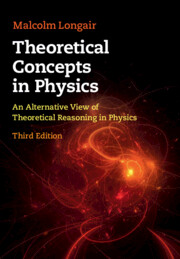Book contents
- Frontmatter
- Dedication
- Contents
- Preface and Acknowledgements
- 1 Introduction
- Case Study I The Origins of Newton’s Laws of Motion and of Gravity
- 2 From Ptolemy to Kepler: The Copernican Revolution
- 3 Galileo and the Nature of the Physical Sciences
- 4 Newton and the Law of Gravity
- Case Study II Maxwell’s Equations
- Case Study III Mechanics and Dynamics: Linear and Non-linear
- Case Study IV Thermodynamics and Statistical Physics
- Case Study V The Origins of the Concepts of Quantisation and Quanta
- Case Study VI Special and General Relativity
- Case Study VII Cosmology and Physics
- Author Index
- Subject Index
2 - From Ptolemy to Kepler: The Copernican Revolution
from Case Study I - The Origins of Newton’s Laws of Motion and of Gravity
Published online by Cambridge University Press: 27 March 2020
- Frontmatter
- Dedication
- Contents
- Preface and Acknowledgements
- 1 Introduction
- Case Study I The Origins of Newton’s Laws of Motion and of Gravity
- 2 From Ptolemy to Kepler: The Copernican Revolution
- 3 Galileo and the Nature of the Physical Sciences
- 4 Newton and the Law of Gravity
- Case Study II Maxwell’s Equations
- Case Study III Mechanics and Dynamics: Linear and Non-linear
- Case Study IV Thermodynamics and Statistical Physics
- Case Study V The Origins of the Concepts of Quantisation and Quanta
- Case Study VI Special and General Relativity
- Case Study VII Cosmology and Physics
- Author Index
- Subject Index
Summary
The birth of physics can be traced to the Copernican, Galilean and Newtonian revolutions of the seventeenth century. The Copernican picture of the world was to replace the geocentric Ptolemaic model. Tycho Brahe's innovations in observation brought about an order of magnitude improvement in the determination of the motions of the planets. These observations resulted in the formulation of Kepler's laws of planetary motion, which were to be crucial in Newton's discovery of the laws of motion.At the same time, Galileo's pioneering telescopic discoveries provided support for the Copernican picture of the world.
Keywords
- Type
- Chapter
- Information
- Theoretical Concepts in PhysicsAn Alternative View of Theoretical Reasoning in Physics, pp. 11 - 28Publisher: Cambridge University PressPrint publication year: 2020

